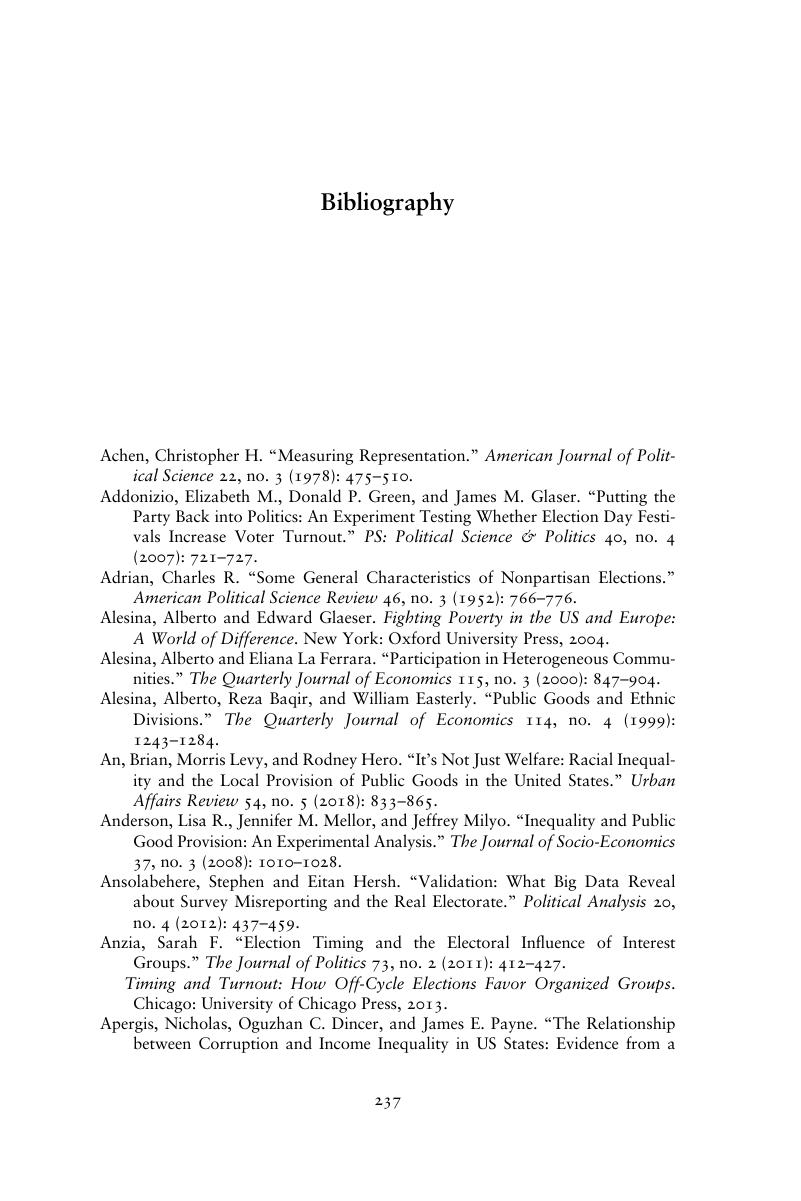Book contents
- Hometown Inequality
- Hometown Inequality
- Copyright page
- Dedication
- Contents
- Figures
- Tables
- Acknowledgments
- 1 Race, Class, and Representation in Local Government
- 2 Studying Inequality in Representation in Local Government
- 3 Municipal Politics As Sites of Racial and Class Contention
- 4 Local Political Participation, Municipal Elections, and the Prospects for Representation in Local Government
- 5 Racial Inequality in Representation on Municipal Councils and in Policy
- 6 Predictors of Racial Inequality in Representation
- 7 Economic Inequality in Representation on Municipal Councils and in Policy
- 8 Predictors of Economic Inequality in Representation
- 9 Race, Class, and Representation in Local Politics
- Bibliography
- Index
- References
Bibliography
Published online by Cambridge University Press: 20 June 2020
- Hometown Inequality
- Hometown Inequality
- Copyright page
- Dedication
- Contents
- Figures
- Tables
- Acknowledgments
- 1 Race, Class, and Representation in Local Government
- 2 Studying Inequality in Representation in Local Government
- 3 Municipal Politics As Sites of Racial and Class Contention
- 4 Local Political Participation, Municipal Elections, and the Prospects for Representation in Local Government
- 5 Racial Inequality in Representation on Municipal Councils and in Policy
- 6 Predictors of Racial Inequality in Representation
- 7 Economic Inequality in Representation on Municipal Councils and in Policy
- 8 Predictors of Economic Inequality in Representation
- 9 Race, Class, and Representation in Local Politics
- Bibliography
- Index
- References
Summary

- Type
- Chapter
- Information
- Hometown InequalityRace, Class, and Representation in American Local Politics, pp. 237 - 252Publisher: Cambridge University PressPrint publication year: 2020

